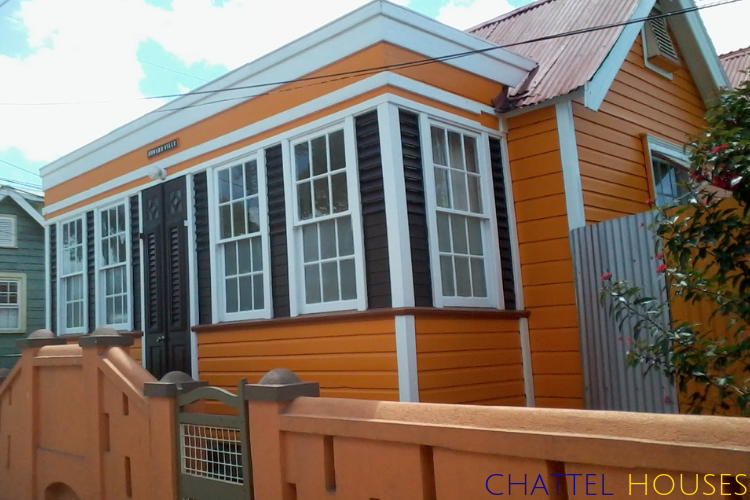Did you know that undertaking a few home maintenance processes and projects could save you thousands of dollars?
The act of preserving your tiny home, comes from a place of protecting an investment and keeping your home safe, so that you have somewhere safe to live.
The key to ensuring that your home is safe and habitable lies in the basics of home maintenance. Many chattel houses in the Caribbean, especially those in Barbados, are at least fifty years old. If you took a drive around and seriously scrutinised some of them, you could not tell the age of the structure.
The owners of these homes have fully grasped the concept that their home is an investment that should be taken care of consistently. If you feel the same way about your tiny home, and you want to ensure that your investment is sound, then this article is just for you.
The Basics of Home Maintenance
If you are in the process of building a home, you must consider the quality of the materials that you are using for construction. If you think about it, the construction phase is where you establish the foundation of a home that should last you upward of fifty years, without any serious mishaps.
So, you have to take extreme care when selecting materials and contracting craftsmen to build. Some considerations include being more aware of the types of materials and their expected lifespans and wear and tear.
For homes that have been bought or will be bought in the future, a home inspection is one of the first things that you can do in your home maintenance process. Depending on where you live, home inspections are not legally required and some home owners skip this step altogether.
However, a home inspection can reveal issues that may not be visible with one look. A licensed home inspector or a registered builder will be able to test the main components of your home. At the very minimum, they will inspect the foundation, walls and roof to assess structural integrity; electrical and plumbing components for reliability and safety; window and door functionality and security; heating and air conditioning systems and the indoor air quality; and the condition of the exterior of the home and the surrounding landscape.
Maintaining a home goes a step further than fixing things as soon as they break. To effectively maintain a home, it requires a preventative approach rather than a reactive approach. Admittedly, it’s not always possible to head off all problems before they arise.
There are some things that will break and unfortunately, we do not have any control over this. As a homeowner, it’s your responsibility to fix things when they do break and not let the problem fester continuously. Delays can make the problem worse and can cause additional problems which can equate to more money being spent.
Foundation, Walls and Roof
When checking the three main structural components of your home, one of the main things you will be looking for is wear and tear. This wear and tear may be caused due to the property aging, but can also be attributed to damage and insect damage. Damage due to weather may be covered by home insurance, but you should get it checked out as soon as the damage occurs.
Termites and other pests can also damage your home to the extent that the structure is compromised, thus causing safety concerns. Be mindful that termites may be present, even though you cannot see their tell-tale trail. Therefore, you must treat your home on a regular basis for termites and any other insects that may cause damage to your home.
Tiny Home Engineering Systems
Think of your home’s engineering systems as the core functions that enable your home to fulfill your needs. Electrical, plumbing and HVAC systems are important because they keep the home running. Living without electricity, water and heat in the winter or air conditioning in the summer can be very uncomfortable.
Electrical
Unless you are a licensed electrician or electrical engineer, you should not undertake any electrical work on your home. Instead, if you notice a problem, contact someone who can fix it properly and within a reasonable time frame. However, you should be able to change a light bulb or change batteries in your electrical device remote or controller. Otherwise, call a professional!
Plumbing
Some homeowners are more willing to fiddle with the plumbing in their tiny, if the need arises. Although you should leave the more serious tasks to a plumber, there are a few basic plumbing maintenance projects that you could undertake. Things such as unclogging a sink or toilet; changing a washer or cartridge or even shutting down the water main in the event of a major catastrophe can save you.
Heating and Air Conditioning
Sometimes, problems with the HVAC system are not realised until something stops working. Each year, you should procure the services of a reputable HVAC company to inspect your HVAC unit. However, you can follow a few basic steps to ensure that your systems runs efficiently. You should also keep all of your outdoor units free from grass, leaves and other debris, because they could impact their performance.
Openings and Exterior
Although it’s true that the style of windows and doors can significantly alter the home’s exterior, they serve a greater purpose. Windows and doors, offer a sense of security and privacy that you need to protect your family, yourself and the contents of your home. Also, the exterior of your home and the surrounding landscape can reduce the number of maintenance and repairs required on the home.
Windows and Doors
When you engage in a home maintenance exercise, you should include your windows and doors in your list of things to do. Most windows and doors are expected to last a house forever, and as a homeowner, you can take a few steps to keep them in good working order. Cleaning your windows and doors every two or three months will prevent build up in the glass, tracks, hinges and sills. This can prevent decay and rot and extend the life of these items.
Home Exterior and Landscape
Curb appeal is seen as providing insight into your home. That being said, the exterior of your home should always be in good condition. You should be ready to repaint areas where the paint is chipped and peeling; trim hedges and grass and remove dried debris from in front of your home and clean gutters and chimneys and rid them of leaves, dirt and other debris. Always check for mildew and rot on walls and around window and door frames.
Cleaning and Cleanliness
Clean both the inside and outside of your home. A clean home, will last a lot longer than one that is filthy. Where there is filth, you will find insects, vermin and disease. When you take the time to clean and take care of your home, you are providing a healthy environment and ensuring that your family remains healthy.
Tiny Home Maintenance
Even though your home is tiny, it still requires that care and attention of larger homes. This is because the modern tiny home contains all of the luxuries of larger homes, even though on a smaller scale in a smaller footprint. To make home maintenance a priority, you can follow the steps that have been highlighted. These will enable you to keep your home in good working order for many years to come.
You must be willing to learn new things where possible and have a keen interest how the basic components of your home function. At the end of the day, you will be wiser and you could potentially avoid scammers who may try to charge you exorbitant prices for basic home fixes.
References:
Family Handy Man – A First Time Buyers Guide to Home Maintenance
This Old House – 47 Skills You Need to Survive Homeownership
Money Crashers – 13 Simple DIY Home Maintenance Tips & Ideas
HGTV – Home Inspection 101
Total Home Inspection – Home Inspection Checklist
First Windows & Doors – Care & Maintenance
House Logic – HVAC Maintenance Checklist





